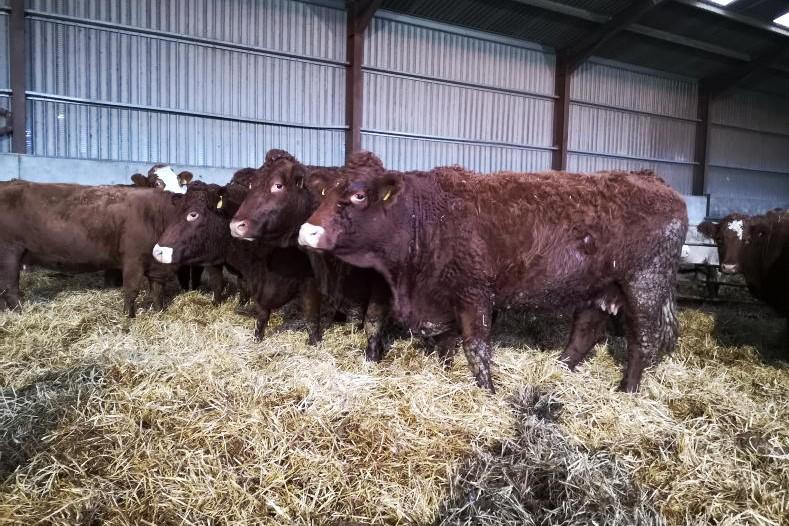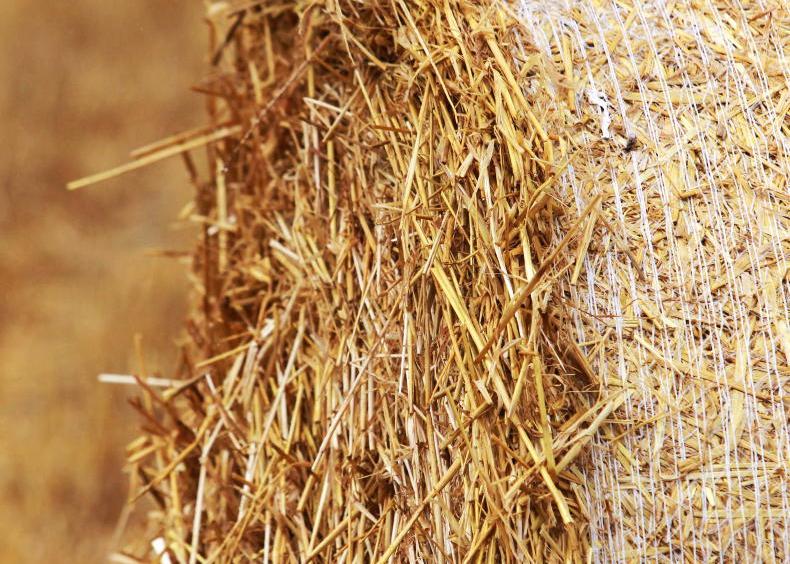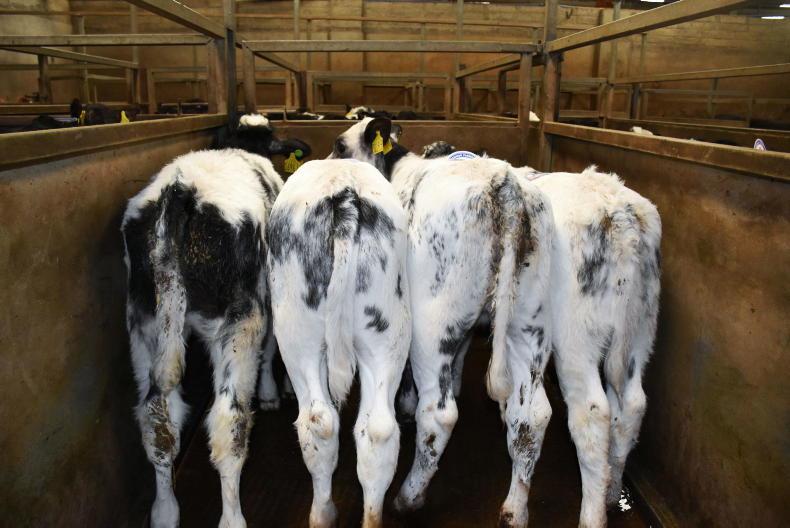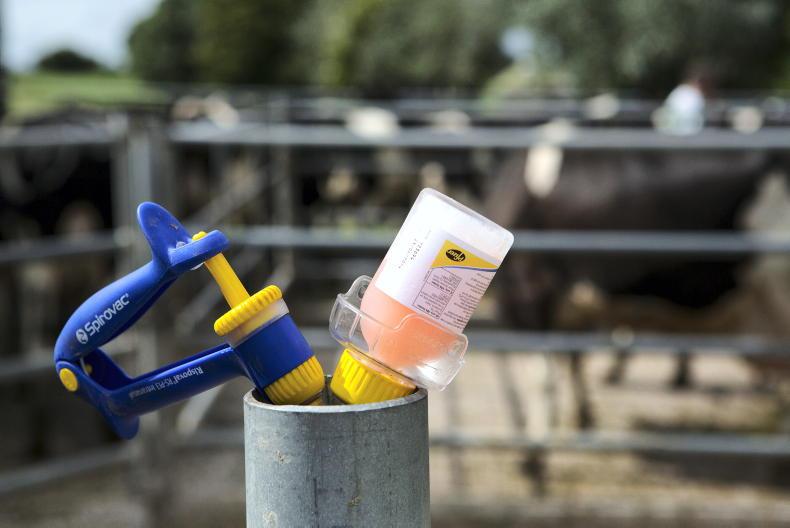While the majority of cattle in Ireland are housed on slatted floor sheds for the winter, there is still a sizable amount of farms operating dry-floor sheds.
As well as this, on beef farms with spring-calving herds, cows will be moving on to a straw-bedded area for a period around the time of calving.
For our neighbours in Scotland, the vast majority of cattle are housed on straw-bedded courts, due to the availability and close proximity of straw in many of the heavily beef populated areas.
It is only when you travel to the far west or north that you will find slatted sheds in the country.
For Irish farmers, straw can be a costly input, even on farms that are only bedding cattle on straw for a short while.
It was when I spent time in Aberdeenshire in the northeast of Scotland that I saw many different techniques to minimise straw usage and wastage.
Scrape pass
The main way farmers could reduce straw usage is through the use of a scrape pass along the feed face.
Around 40% of an animal's dung and urine will be excreted while they are feeding.
Therefore, having a scrape pass in the shed and keeping it clean by scraping it at least three times a week will significantly reduce the amount of straw required in the shed.

Scrape pass in a dry-floor shed. The cattle can be closed off the pass for scraping.
It is also important to have some sort of barrier at the edge of the scrape pass, to help define the difference between the bedded area and the pass.
This can be something as simple as a line of railway sleepers.
Not only will this make scraping the pass much easier, it also makes cattle lift their feet when leaving the bedded area, preventing them from dragging dry bedding out on to the pass, which leads to increased wastage.
Shed design and ventilation
Obviously, you want to make sure that there is no rainwater getting into the shed and wetting the bedding.
Also, make sure that drinkers are at the front rather than the back of the shed. This reduces the likelihood of water troughs leaking and reduces the amount of time cattle spend standing on the bedded area.
The ventilation in the shed also has a huge effect on how long straw lasts in sheds. Good ventilation removes damp air and therefore prolongs the lifespan of the bedding.
Improving the ventilation where needed will see a marked improvement in both animal health and the length of time you get out of each bale of straw.
Drainage layer
In some cases, especially when straw was dear or in short supply, farmers would use a base layer of a poorer-quality straw such as rape straw and then bed over that with barley straw.
The coarser base layer would act as a sponge, drawing moisture down from the surface and helping to maintain a dry layer of bedding on the surface for stock.
I have also seen farms use woodchip as a base layer in this situation.
While the majority of cattle in Ireland are housed on slatted floor sheds for the winter, there is still a sizable amount of farms operating dry-floor sheds.
As well as this, on beef farms with spring-calving herds, cows will be moving on to a straw-bedded area for a period around the time of calving.
For our neighbours in Scotland, the vast majority of cattle are housed on straw-bedded courts, due to the availability and close proximity of straw in many of the heavily beef populated areas.
It is only when you travel to the far west or north that you will find slatted sheds in the country.
For Irish farmers, straw can be a costly input, even on farms that are only bedding cattle on straw for a short while.
It was when I spent time in Aberdeenshire in the northeast of Scotland that I saw many different techniques to minimise straw usage and wastage.
Scrape pass
The main way farmers could reduce straw usage is through the use of a scrape pass along the feed face.
Around 40% of an animal's dung and urine will be excreted while they are feeding.
Therefore, having a scrape pass in the shed and keeping it clean by scraping it at least three times a week will significantly reduce the amount of straw required in the shed.

Scrape pass in a dry-floor shed. The cattle can be closed off the pass for scraping.
It is also important to have some sort of barrier at the edge of the scrape pass, to help define the difference between the bedded area and the pass.
This can be something as simple as a line of railway sleepers.
Not only will this make scraping the pass much easier, it also makes cattle lift their feet when leaving the bedded area, preventing them from dragging dry bedding out on to the pass, which leads to increased wastage.
Shed design and ventilation
Obviously, you want to make sure that there is no rainwater getting into the shed and wetting the bedding.
Also, make sure that drinkers are at the front rather than the back of the shed. This reduces the likelihood of water troughs leaking and reduces the amount of time cattle spend standing on the bedded area.
The ventilation in the shed also has a huge effect on how long straw lasts in sheds. Good ventilation removes damp air and therefore prolongs the lifespan of the bedding.
Improving the ventilation where needed will see a marked improvement in both animal health and the length of time you get out of each bale of straw.
Drainage layer
In some cases, especially when straw was dear or in short supply, farmers would use a base layer of a poorer-quality straw such as rape straw and then bed over that with barley straw.
The coarser base layer would act as a sponge, drawing moisture down from the surface and helping to maintain a dry layer of bedding on the surface for stock.
I have also seen farms use woodchip as a base layer in this situation.










SHARING OPTIONS